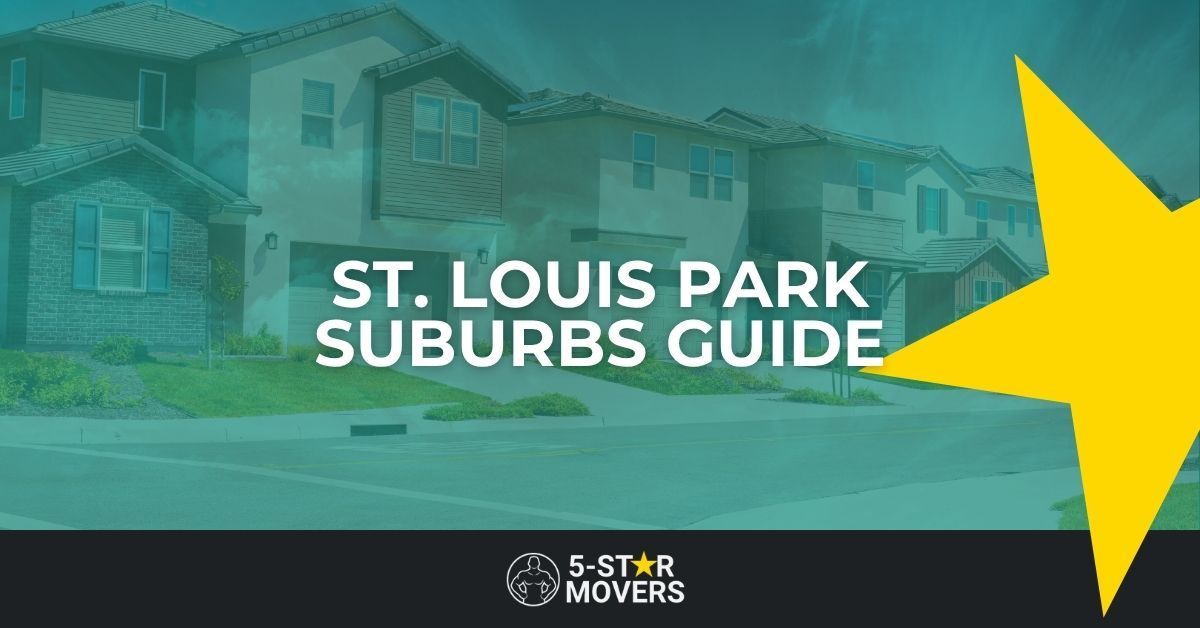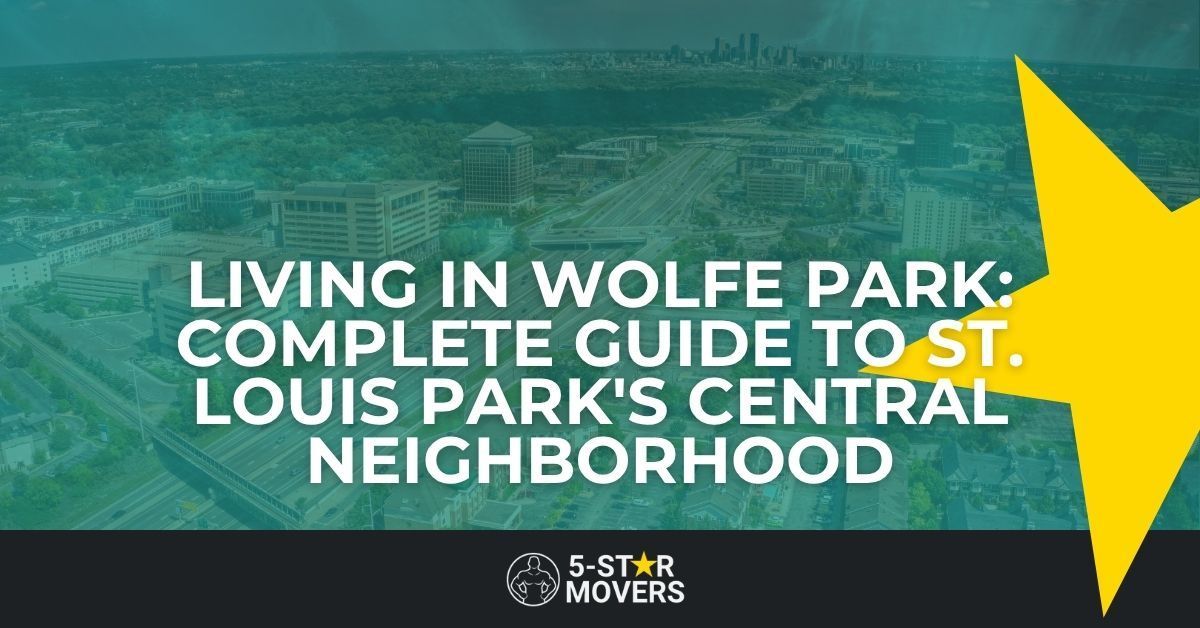St. Louis Park Neighborhoods Complete Area Guide
Choosing the right neighborhood shapes your entire living experience, from morning coffee routines to weekend activities and everything in between. St. Louis Park neighborhoods offer surprising diversity within just 10.8 square miles, each area maintaining distinct character shaped by development era, geography, and community culture. This comprehensive St. Louis Park neighborhood guide breaks down each community's personality, housing options, and daily realities, helping you identify which area aligns with your lifestyle priorities and budget.
Understanding St. Louis Park's Neighborhood Layout
St. Louis Park's irregular boundaries and varied development patterns create distinct areas in St. Louis Park that feel worlds apart despite their proximity. The city doesn't use official neighborhood designations like Minneapolis, but long-time residents recognize clear community boundaries defined by major roads, parks, and development eras. Highway 100 creates an eastern border, Interstate 394 cuts through the northern section, while Highway 7 and Excelsior Boulevard form major east-west corridors that influence neighborhood character.
The topography plays a surprising role in shaping St. Louis Park community areas. The northeastern sections near Cedar Lake feature rolling hills and mature tree canopy from early 20th-century development. Central areas along the former streetcar lines showcase mid-century suburban planning with uniform lots and curving streets. Western neighborhoods, developed more recently, blend townhomes with single-family houses on the ancient Lake Minnetonka shoreline's flat terrain.
Understanding these patterns helps when exploring our complete St. Louis Park city guide, as each neighborhood's development era influences everything from architectural styles to street width. Pre-war areas feature narrow lots with alley access, while 1950s developments introduced the attached garage and larger setbacks that define suburban living. Recent infill development adds modern housing to established neighborhoods, creating interesting architectural diversity.
Elmwood: Classic Suburban Living
The Elmwood neighborhood, centered around 36th Street and Louisiana Avenue, represents quintessential 1950s suburban development. This area features predominantly single-family homes on generous 8,000-10,000 square foot lots with mature elm and maple trees creating cathedral-like canopies over quiet streets. The neighborhood boundaries stretch from Highway 100 west to Louisiana Avenue, and from 36th Street north to Minnetonka Boulevard.
Housing in Elmwood consists primarily of three-bedroom ramblers and split-levels ranging from 1,200 to 2,000 square feet. Original homes feature characteristic period details like knotty pine paneling, terrazzo floors, and built-in planters. Recent sales range from $325,000 for original-condition properties to $475,000 for updated homes with finished basements. The area attracts families seeking most affordable areas in St. Louis Park with traditional suburban amenities.
Susan Lindgren Elementary School at 3915 Wooddale Avenue anchors the neighborhood's family focus, with its Spanish immersion program drawing families throughout the district. The school's playground serves as an informal community gathering space, particularly during evening hours and weekends. Kentucky Park at Kentucky Avenue and 37th Street provides ball fields and tennis courts, while the Elmwood Shopping Center at Highway 100 and 36th Street offers convenient access to Cub Foods and essential services.
Daily life in Elmwood revolves around predictable suburban rhythms. Neighbors maintain tidy lawns, kids ride bikes on sidewalks, and the annual block party brings everyone together for potluck dinners. The proximity to Highway 100 provides quick access to employment centers while maintaining distance from commercial traffic. However, airplane noise from flight paths affects some sections, particularly south of 37th Street.
Fern Hill: Diverse Housing and Natural Beauty
Fern Hill occupies St. Louis Park's northeast corner, bounded by Highway 100, Cedar Lake Road, and the Minneapolis border. This neighborhood offers the most diverse housing options in the city, from luxury apartments to modest single-family homes. The area's proximity to Westwood Hills Nature Center at 8300 Franklin Avenue defines its character, providing 160 acres of preserved marsh, prairie, and forest within walking distance.
The housing mix includes everything from 1920s cottages near Cedar Lake Road to contemporary townhomes along Highway 100. The Pavilion apartments at 8200 26th Street offer upscale living with underground parking and fitness facilities, with one-bedrooms starting at $1,600 monthly. Single-family homes range from $400,000 starter properties to $700,000 updated colonials near the nature center. This variety makes Fern Hill attractive to young professional areas in St. Louis Park seekers and empty nesters alike.
Temple Israel at 2323 Fremont Avenue South serves as a cultural anchor, hosting community events beyond religious services. The synagogue's presence contributes to the area's significant Jewish population, with many families choosing Fern Hill for proximity to religious and cultural institutions. Beth El Synagogue at 5225 Barry Street West sits just minutes away, creating a corridor of Jewish community life.
The neighborhood's daily rhythm differs from typical suburban patterns. Morning joggers traverse nature center trails before work, while evening dog walkers populate the paths around Browndale Park. The Cooper restaurant at 5920 Cedar Lake Road serves as an informal neighborhood meeting spot, where locals gather for weekend brunch or evening cocktails. Whole Foods Market just across the border in Minneapolis provides organic grocery options within walking distance for eastern sections.
Minikahda Vista: Prestige and Privacy
Where to live in St. Louis Park if seeking prestige? Minikahda Vista, surrounding the private Minikahda Country Club, represents the city's most exclusive residential area. Tree-lined streets like Brookside Avenue, Glenhurst Avenue, and Edgebrook Place feature expansive lots with custom homes showcasing architectural variety from Tudor Revival to contemporary prairie style. The club's golf course, while private, provides preserved green space that enhances the entire neighborhood's ambiance.
Housing in Minikahda Vista commands premium prices, with homes typically ranging from $600,000 to over $1.5 million. Properties average 3,000-5,000 square feet on half-acre lots, many with four-car garages and professionally landscaped grounds. Original 1920s estates mix with 1990s rebuilds and recent contemporary constructions. The area attracts executives, professionals, and established families seeking luxury neighborhoods in St. Louis Park with privacy and prestige.
The neighborhood maintains an intentionally quiet atmosphere. Streets lack sidewalks in many sections, preserving the estate-like feel. Children attend Peter Hobart Elementary at 4925 Cedar Lake Road, known for small class sizes and parent involvement. Private security patrols supplement city police services, particularly around the country club perimeter. The Minikahda Vista Neighborhood Association actively manages development proposals to preserve area character.
Daily conveniences require short drives, as the neighborhood lacks commercial development. Residents frequent The Shops at West End for upscale shopping or Excelsior and Grand for dining. The isolation provides tranquility but limits spontaneous walks to coffee shops or restaurants. This trade-off suits residents prioritizing privacy over walkability, creating one of the most exclusive St. Louis Park residential neighborhoods.
Oak Hill: Family-Friendly Affordability
Oak Hill spreads across western St. Louis Park, roughly bounded by Highway 7, Louisiana Avenue, Minnetonka Boulevard, and Zarthan Avenue. This neighborhood exemplifies accessible suburban living with a mix of 1960s-era ramblers, newer townhome developments, and apartment complexes. The area centers around Oak Hill Park at 3201 Alabama Avenue, whose ball fields, playgrounds, and picnic areas create a natural community gathering point.
Housing variety defines Oak Hill's appeal to diverse buyers. Original single-family homes on quarter-acre lots sell from $350,000-$450,000, making this one of the best neighborhoods St. Louis Park offers for first-time buyers. Townhome communities like Oak Hill Townhomes provide maintenance-free living from $275,000-$350,000. Apartment complexes along Alabama Avenue offer rental options from $1,100-$1,500 monthly, attracting young professionals and downsizing seniors.
Aquila Elementary at 3303 Virginia Avenue South serves the neighborhood with strong STEM programs and active parent involvement. The school's environmental focus includes gardens and outdoor learning spaces that engage students with nature. Aquila Park adjacent to the school provides year-round recreation with hockey rinks, basketball courts, and summer programming. The St. Louis Park Community Education offers before and after-school care at the Aquila site.
The neighborhood's central location provides convenient access to employment and shopping without the premium prices of eastern neighborhoods. Knollwood Mall sits five minutes away via Highway 7, while downtown Minneapolis remains accessible in 20 minutes. This combination of affordability, family amenities, and location makes Oak Hill particularly attractive to best family neighborhoods in St. Louis Park seekers.
Bronx Park: Hidden Gem Near Twin Lakes
Bronx Park remains one of St. Louis Park's best-kept secrets, tucked between Louisiana Avenue and Twin Lakes in the city's southwest corner. This compact neighborhood features primarily 1940s and 50s homes on smaller lots, creating an intimate community feel distinct from sprawling suburban developments. The proximity to Twin Lakes and Bass Lake Preserve provides natural amenities typically associated with more expensive areas.
Housing in Bronx Park offers exceptional value for location-conscious buyers. Cape Cod-style homes and compact ramblers range from $325,000-$425,000, with most properties featuring two to three bedrooms in 1,000-1,400 square feet. The smaller scale attracts empty nesters downsizing from larger homes and young families stretching budgets. Recent improvements to Twin Lakes Park including fishing docks and walking paths have increased the area's desirability.
The neighborhood maintains strong community bonds through the active Bronx Park Neighborhood Association, which organizes annual picnics, holiday celebrations, and beautification projects. Residents take pride in the area's working-class roots while welcoming newcomers who appreciate the unpretentious atmosphere. The Twin Lakes Shopping Center at Louisiana and Minnetonka Boulevard provides everyday conveniences without leaving the neighborhood.
Living here means accepting certain trade-offs. Some streets lack sidewalks, and housing stock generally requires updates. However, the natural amenities, community spirit, and relative affordability create value for residents prioritizing location over luxury. This makes Bronx Park ideal for those researching up-and-coming areas in St. Louis Park before prices increase.
Lenox: Historic Character Near Downtown
The Lenox neighborhood, one of St. Louis Park's oldest areas, clusters around the historic downtown district near Excelsior Boulevard and Wooddale Avenue. This area features the city's most architecturally diverse housing stock, from 1920s bungalows to contemporary infill development. The neighborhood's walkability to downtown amenities distinguishes it from car-dependent western areas.
Original Craftsman bungalows and Tudor cottages on tree-lined streets like Princeton Avenue and Oxford Street sell from $375,000-$525,000, depending on updates and size. Recent infill development has added modern townhomes and small apartment buildings, increasing density while maintaining neighborhood scale. The mix creates interesting streetscapes where century-old homes neighbor contemporary architecture. Renters find options from $1,000 studio apartments to $2,000 two-bedroom units in newer buildings.
The historic Lenox House at 3700 Monterey Drive, now housing the St. Louis Park Historical Society, anchors the neighborhood's heritage identity. Wolfe Park and the Recreation Center sit within walking distance, providing year-round activities from swimming to skating. The developing downtown district along Excelsior Boulevard adds restaurants and services, increasing the area's appeal to those seeking walkable neighborhoods in St. Louis Park.
Daily life in Lenox offers urban conveniences unusual for St. Louis Park. Residents walk to JavaTwist coffee shop at 5756 Sanibel Drive, grab dinner at The Copper Hen at 2515 Nicollet Avenue, or catch movies at Showplace ICON. This walkability attracts young professionals and seniors who prefer less driving. For detailed insights into the area, explore living in Wolfe Park and surrounding Lenox areas.
Meadowbrook: Golf Course Living
Meadowbrook wraps around the Meadowbrook Golf Course in south-central St. Louis Park, creating a unique neighborhood defined by fairway views and mature landscaping. Streets like Meadowbrook Road and Meadowbrook Lane feature larger homes backing onto the course, while interior streets offer more modest properties benefiting from the open space ambiance.
Top areas to live in St. Louis Park for golf enthusiasts center here, with homes ranging from $400,000 ranch styles to $800,000 custom builds overlooking fairways. The golf course, while public, provides a country club atmosphere at suburban prices. Many homes feature walk-out basements opening to course views, creating premium outdoor living spaces. The Meadowbrook Clubhouse serves as an informal neighborhood gathering spot, even for non-golfers who enjoy the restaurant and event space.
The neighborhood demographics skew older, with many long-time residents who bought homes decades ago. However, turnover is introducing younger families attracted to larger lots and the unique golf course setting. Meadowbrook Lake adds another natural amenity, with walking paths and fishing access enhancing the area's outdoor appeal.
The location proves convenient for commuters, with quick access to Highway 7 and Excelsior Boulevard. However, the neighborhood lacks walkable commercial amenities, requiring drives for all errands. This suburban trade-off suits residents prioritizing scenic views and larger properties over urban conveniences. Those comparing Wolfe Park vs Minikahda Vista might find Meadowbrook offers a middle ground between accessibility and prestige.
Birchwood: Modern Development West of 100
Birchwood represents newer development in St. Louis Park, primarily built from the 1980s onward west of Highway 100. This area features contemporary suburban design with cul-de-sacs, larger homes, and extensive townhome communities. The neighborhood attracts families seeking modern amenities and efficient homes without the maintenance requirements of older properties.
St. Louis Park housing areas here include single-family homes from $425,000-$625,000, typically featuring 2,500-3,500 square feet with three-car garages and open floor plans. Townhome communities like Birchwood Hills offer maintenance-free living from $300,000-$400,000. The newer construction means lower utility bills, modern systems, and layouts designed for contemporary living. This efficiency appeals to environmentally conscious buyers and those seeking predictable maintenance costs.
Park Spanish Immersion School at 6701 West 41st Street draws families prioritizing language education, with the dual-language program attracting students district-wide. The school's newer facility includes modern technology and learning spaces uncommon in older buildings. Birchwood Park provides neighborhood recreation space, though smaller than eastern parks.
The neighborhood's western location means longer commutes to Minneapolis but easier access to western suburbs like Minnetonka and Eden Prairie. Shopping at Ridgedale Center in Minnetonka takes just 10 minutes, while Target and Cub Foods on Highway 7 provide everyday needs. This positioning suits families with western suburban employment or those prioritizing newer housing over central location.
Triangle: Affordable Urban Edge
The Triangle neighborhood, bounded by Highway 100, I-394, and Theodore Wirth Parkway, offers some of St. Louis Park's most affordable housing with surprisingly convenient location. This often-overlooked area provides urban proximity at suburban prices, attracting budget-conscious buyers and investors recognizing untapped potential.
Housing here includes 1950s ramblers from $275,000-$375,000, making this among the most affordable areas in St. Louis Park. Apartment buildings along Highway 100 frontage provide rental options from $900-$1,300, attracting essential workers and young professionals. The area's affordability stems partly from highway noise and commercial adjacency, factors that don't bother residents prioritizing location and value.
The neighborhood benefits from proximity to Theodore Wirth Park, offering golf, skiing, and extensive trails just across the parkway. Eliot Park at Ottawa Avenue provides local green space with recently updated playgrounds. The developing West End district sits minutes away, providing employment, shopping, and entertainment without long commutes.
Infrastructure improvements including sound walls and street upgrades are enhancing livability while maintaining affordability. This positions Triangle as an emerging area for those seeking value near urban amenities. First-time buyers and investors particularly benefit from the combination of low entry prices and development potential.
Choosing Your St. Louis Park Neighborhood
Selecting among St. Louis Park neighborhoods requires balancing priorities: budget, commute, schools, walkability, and lifestyle preferences. Each area offers distinct advantages, from Minikahda Vista's prestige to Oak Hill's family focus, Fern Hill's diversity to Lenox's walkability. Understanding these differences helps narrow options when planning your complete move to St. Louis Park.
For families prioritizing schools, Elmwood and Oak Hill offer strong elementary options with traditional suburban amenities. Young professionals might prefer Fern Hill's apartment options or Lenox's walkability. Empty nesters often choose Bronx Park's smaller homes or Birchwood's townhomes for maintenance-free living. Budget-conscious buyers should explore Triangle and western Oak Hill, while those seeking luxury focus on Minikahda Vista and golf course properties.
Consider lifestyle factors beyond housing. If walking to coffee shops matters, focus on Lenox and areas near West End. Nature lovers should prioritize Fern Hill near Westwood Hills or Bronx Park near Twin Lakes. Commuters need highway proximity, making Birchwood and Triangle attractive despite their edges. Those seeking community connection might prefer established neighborhoods like Elmwood with strong associations.
Visit target neighborhoods at different times—weekday mornings reveal commute reality, while weekends show community activity. Drive the route to work during rush hour. Visit parks and schools even without children to gauge neighborhood energy. Eat at local restaurants and shop at nearby stores to experience daily conveniences. These investigations reveal whether an area truly fits your lifestyle.
Making Your Neighborhood Move
Once you've chosen among St. Louis Park's diverse neighborhoods, executing a successful move requires local knowledge and careful planning. Each area presents unique challenges, from Minikahda Vista's long driveways requiring extended carry distances to apartment buildings with specific elevator reservation requirements. Weather considerations affect moving logistics year-round, whether summer's heat or winter's snow-covered streets.
Professional assistance proves invaluable navigating neighborhood-specific challenges. Older areas like Lenox feature narrow streets with mature trees requiring careful truck navigation. Newer developments might have HOA requirements for move-in procedures. Apartment transitions need coordination with property management for elevator access and parking permits.
5-Star Movers brings specific expertise to every St. Louis Park neighborhood. We know which Elmwood streets require smaller trucks, understand Fern Hill's apartment protocols, and navigate Minikahda Vista's estate driveways with appropriate equipment. Our experience in safest neighborhoods in St. Louis Park ensures secure, efficient relocations protecting both property and peace of mind.
Beyond physical moving, we understand each neighborhood's rhythm. We schedule Oak Hill family moves around school hours, time Lenox transitions to avoid downtown traffic, and coordinate Triangle moves considering highway patterns. This local knowledge, combined with professional service, ensures smooth transitions into your chosen St. Louis Park community. Contact 5-Star Movers today to discuss your neighborhood-specific moving needs and discover why residents throughout St. Louis Park trust us for stress-free relocations.





